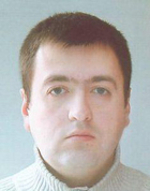
Šaša Stojanović
University of Belgrade
Ph.D. Student

First, the modern programming paradigms are discussed. Second, a novel classification of existing approaches
to supercomputing is presented. Third, each existing approach is analyzed using the same template:
(a) A figure explaining the architecture used and
(b) Discussion of major characteristics, pros and cons.
Forth, after a brief overview of MultiCore, ManyCore, CoareGrain DataFlow and FineGrainDataFlow programming models,
most of the slieds are dedicated to programming
of dataflow supercomputers in general
and the Maxeler dataflow supercomputer in particular.
Fifth, the essence of the recent paper
(by a subset of coauthors of this tutorial)
in Communications of the ACM is presented.
Sixth, architectural details and programming examples are given
for applications in GeoPhysics and Banking.
Flynn, M., Mencer, O., Milutinovic, V., et al
"Moving from petaflops (on simple benchmarks) to petadata per unit of time and power (on sophisticated benchmarks)"
Communications of the ACM, March 2013.
Stojanovic, S. et al,
"A Survey of Modern Reconfigurable Computing,"
Proceedings of the IEEE ICIT Conference,
Athens, Greece, March 19-21, 2012.
Mencer, O., Flynn, M,
"The Maxeler Exascale Computing,"
Maxeler,
London, UK, April 2012.
Slides for tutorial available here.